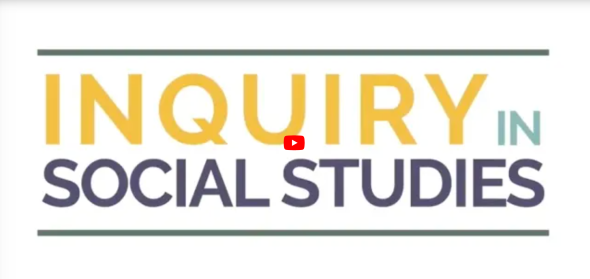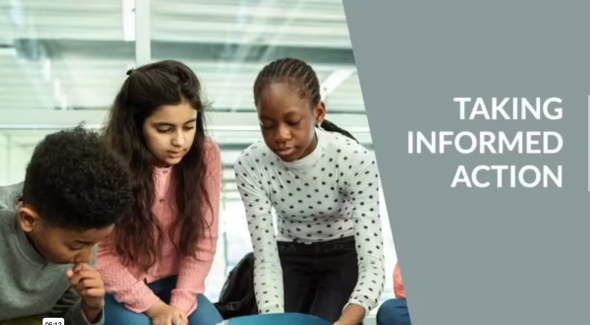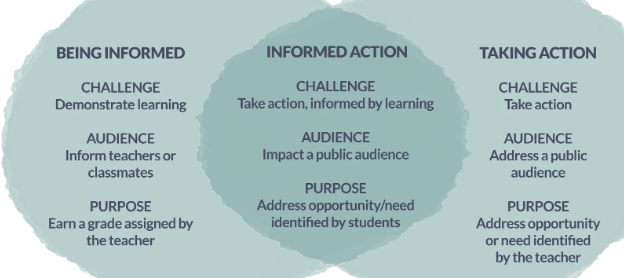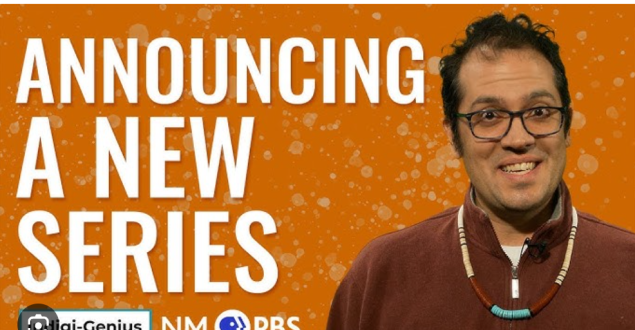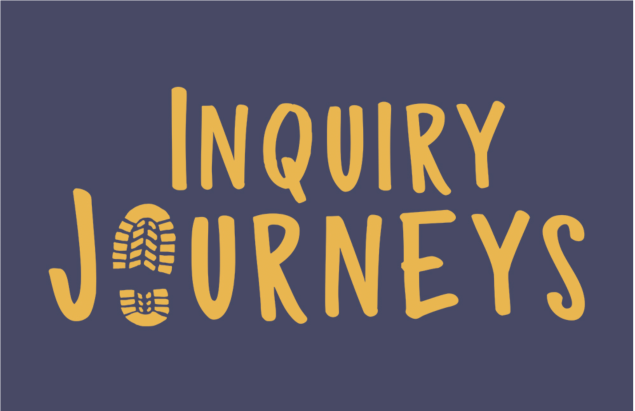Overview Link to this section
Students in SFUSD engage in daily social studies instruction (through both integrated and stand-alone units). As our department explores curriculum, we are providing access to our extended pilot of three, 5-7 week stand alone units from InquirED's Inquiry Journeys for each grade level that can alternate with Science units during the year. We're currently in an extended pilot potential curricula. The extended pilot allows teachers to have early access until an adoption can be finalized. Due to our District's financial budgetary constraints and making sure that teachers can focus on the newly adopted math curriculum, it was not be feasible to get to adoption for this school year. However, our team is committed to trying to provide ongoing social studies resources to teachers across K-5. Social Studies instruction prioritizes building a strong foundation in community and the understanding that every community member (citizen) has a voice in the ways our communities function and are built. We explore history/social studies as windows to the past and present while working together to intentionally build a classroom community rooted in the SFUSD Humanizing Values. Link to this section
Current Events Link to this section
Inquiry Journeys Link to this section
Do you want to teach Social Studies, but don't know where to start? Find everything you need to start using Inquiry Journeys through our SFUSD extended pilot to begin teaching Social Studies in your classroom today. Here you will find everything from the application to get started as a pilot participant, to virtual read aloud libraries that are tied to the curriculum, to professional development resources. As a pilot participant all you have to do is use the curriculum and make time for Social Studies in your classroom.
Get Started with Inquiry Journeys Link to this section
InquirED: Inquiry Journeys Resources
Link to this section

InquirED: Inquiry Hub
The place to find the resources, support and professional learning to help you teach InquirED Inquiry Journeys and get more Social Studies instruction going in your classroom.

Self- Paced Courses
This section offers self-paced professional development. You can use this as part of your QTEA hours. Sessions include Differentiation, Taking Informed Action, Culturally Responsive Education in Social Studies and much more. These sessions can be broken into parts and do not need to be completed in one sitting.
Inquiry Journey Virtual Libraries by Grade Level (K-3)
Link to this section
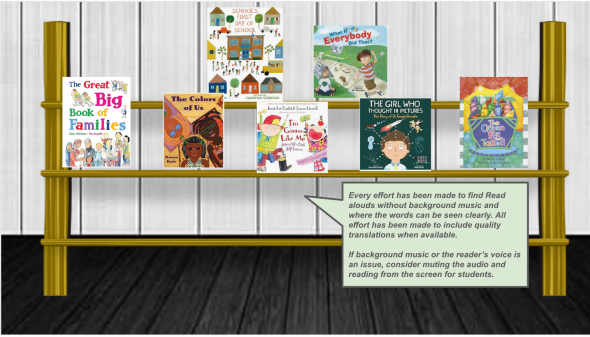
Kindergarten Inquiry Journeys Virtual Library
This library includes the read aloud books that are used in conjunction with specific lessons from the Kindergarten Inquiry Journeys Units. Please use this as an additional resource as necessary. Whenever possible videos that show the actual text were chosen so that teachers could mute the audio and read directly from the screen. Translated books were included if possible.
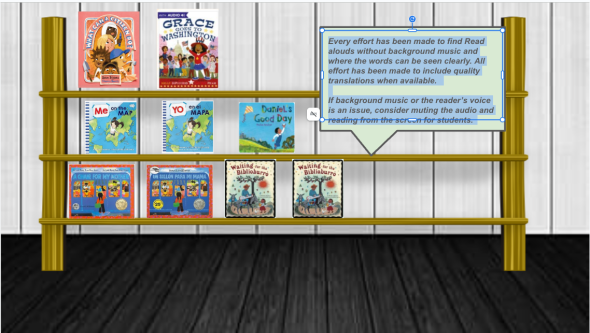
1st Grade Inquiry Journeys Library
This library includes the read aloud books that are used in conjunction with specific lessons from the 1st grade Inquiry Journeys Units. Videos of translated Read Aloud Titles are included when available. Please use this as an additional resource as necessary. Whenever possible videos that show the actual text were chosen so that teachers could mute the audio and read directly from the screen.

2nd Grade Inquiry Journeys Library
This library includes the read aloud books that are used in conjunction with specific lessons from the 2nd grade Inquiry Journeys Units. Please use this as an additional resource as necessary. Whenever possible videos that show the actual text were chosen so that teachers could mute the audio and read directly from the screen.

3rd Grade Inquiry Journeys Library
This library includes the read aloud books that are used in conjunction with specific lessons from the 3rd grade Inquiry Journeys Units. Please use this as an additional resource as necessary. Whenever possible videos that show the actual text were chosen so that teachers could mute the audio and read directly from the screen.
Additional Social Studies Resources Link to this section
This section provides additional materials that help students to connect their learning in the classroom to their personal identities and to the greater San Francisco Bay Area community at large. There are Virtual Cultural Libraries and Cultural Resource Guides as well as in-person and virtual field trip links. These resources can and should be used throughout the year to enhance the Social Studies curriculum being taught in the classroom.
Virtual Libraries
Link to this section
**Remember, you should always preview the books in these libraries to make sure that they are appropriate for your grade level and students. These books often span PK-5 and should not be used in isolation, but as part of a larger set of lessons for the best impact.

American Indian Heritage Virtual Library
Here is a library that can be used for Native American History month, but should be used throughout the year. These books have been recommended by the SFUSD American Indian Resource Guide and the American Indians in Children’s Literature List.

Inclusion Library Bookshelf
Here is a collection of read alouds that have been compiled for SFUSD Inclusion Week, but could be used throughout the year. This bookshelf is based on the books recommended in the SFUSD Inclusion Resource Guide.

MLK, Jr. Remembered Library
Here is a collection of read alouds that have been compiled to remember Martin Luther King, Jr., but could be used throughout the year.

Lunar New Year Library
Here is a collection of read alouds that have been compiled for Lunar New Year, but could be used throughout the year. We have tried to attach bilingual versions when available. Please feel free to email me if you know of other bilingual books or video read alouds to include at romerom@sfusd.edu

Black History Month Virtual Library compiled by Tamara Fields
Here is a collection of read alouds that have been compiled for Black History Month by Tamara Fields from Sherman Elementary, but can be used throughout the school year

Filipinx American Bookshelf
Here is a collection of read alouds that have been compiled for Filipinx Heritage Month, but could be used throughout the year. This bookshelf is based on the books recommended in the SFUSD Filipinx Heritage Guide.
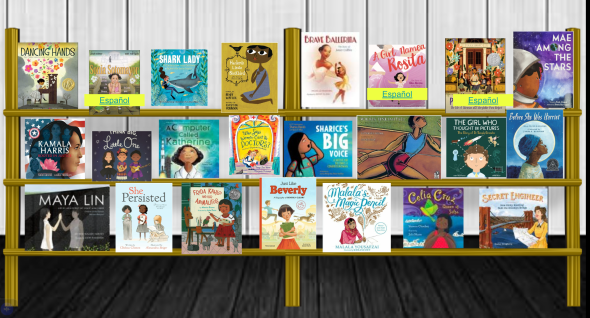
Women's History Virtual Library
This is a collection of read alouds that have been compiled for Women's History Month, but could be used throughout the year.

Holi Bitmoji Classroom
Holi Bitmoji Classroom submitted and compiled by Ekta Kumbhani (1st grade teacher @ Grattan)
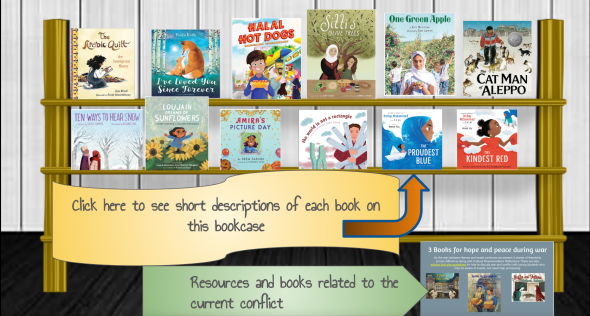
Arab American Heritage Bookshelf
This is a collection of read alouds that have been compiled for Arab American Heritage Month, but could be used throughout the year.

LGBTQ+ Pride Bookshelf
Here is a collection of read alouds that have been compiled for LGBTQIA+ Month, but could be used throughout the year.

Jewish American Heritage Bookshelf
This is a collection of read alouds that have been put together for Jewish American Heritage Month, but can used throughout the year.

Asian American Native Hawaiian and Pacific Islander Heritage Month Virtual Library
This is a collection of read alouds that have been compiled for AANHPI Month, but could be used throughout the year.

Back to School Virtual Library
Here is a collection of books to use at the beginning of the year or anytime you want to do some community and identity building in class.

Latinx Virtual Library
Titles taken from the Latinx Heritage Guide to use for read-alouds throughout the year.

Latiné American Bookshelf
A virtual library that features Latiné authors and characters that can be used throughout the year

Diwali Read Aloud Library
Here are some read alouds and links to help you teach about Diwali in your classrooms. They can be used now and throughout the year as we discuss holidays, traditions, cultures, and families.

Diwali Bitmoji Classroom
Diwali Bitmoji Classroom submitted and compiled by Ekta Kumbhani (1st grade teacher @ Grattan)

Dia de los Muertos Bookshelf
Here is a collection of read alouds that have been compiled for Día de los Muertos, but could be used anytime during the year to discuss holidays.
Links to SFUSD Cultural Resource Guides (scroll left to right)
Link to this section

SFUSD Inclusion Resource Guide

SFUSD Black History Resource Guide

SFUSD Elementary Pride Resource Page

SFUSD Asian American & Pacific Islander Resource Guide

SFUSD Latinx Heritage Month Resource Guide

SFUSD Filipinx History Resource Guide

SFUSD American Indian Resource Guide
This guide has beed updated and presented by our Indian Education Program to provide resources for educators to use throughout the year
Field Trip Sites (Virtual and In-Person) (scroll left to right)
Link to this section

San Francisco Fine Arts Museums
We are currently accepting interest forms for the Get Smart with Art for the 2025/26 school year. Please submit an interest using this form.
This is not an application for the upcoming year; this form is only to gauge interest for the the upcoming year
- Educator programs are offered throughout the year to introduce teachers to the Museums’ collections and special exhibitions. Programs focus on incorporating art and art making into existing classroom curriculum and are led by museum staff.

San Francisco Museum of Modern Art
Guided tours at the museum are available for grades 3-12. Self-guided visits are available for grades K-12.
Be sure to check our Teacher Resources page for art projects, artist-designed activities, videos, animations, and discussion questions.

Oakland Museum of California
OMCA looks forward to greeting you and your students with onsite programs that help students reflect, connect, and contribute to their communities.
Explore the many stories of California and its people, while learning about the natural, artistic, and social forces that affect the state. Come investigate your own role in California’s history and its future.
Whether in OMCA’s Galleries of California Art, History, or Natural Sciences, or one of our special exhibitions, all of our cross-disciplinary programs are rooted in inquiry, dialogue, creative expression, and centering joy and justice.
We

Museum of the African Diaspora
MoAD celebrates Black cultures, ignites challenging conversations, and inspires learning through the global lens of the African Diaspora. Lesson Plans, Museum Tours, MoAD in the Classroom, Education Resources,
Original Programs, Workshops, Talks, and Engaging Events.

Tour City Hall
Book a docent tour of City Hall. Tours are available on Fridays at 11:00 or 1:00
p.m. and can be booked by calling 415-554-6139. School tours are free, but
reservations are required.
There is also a virtual tour of City Hall available that can be taken before your visit as well.
Voting System Demonstration
The Department of Elections is offering a Voting System Demonstration. 5th grade students have the opportunity to view a brief presentation on voting rights and then complete and cast a practice ballot into a ballot
scanning machine. Schedule by filling out this Event Request Form

Day in the Court Program
This program is made possible by the Bar Association of San Francisco Justice and Diversity Center and the Barrister's Club. These tours provide an opportunity for students in grades five through eight to visit the civil courthouse, observe hearings and jury trials, and interact with court staff and judges. Students observe the operation of the judicial system. The program also introduces students to the careers that can be found in the judicial system while teaching basic observation, fact-gathering and critical thinking skills.

Judges in the Classroom
The California Judicial Branch presents Judges in the Classroom. There are lessons that compliment the visit from a judge to discuss in your classroom. Educators in every county in California have access to a "civics pro"--a judge! Present what you'd like on the request form, chances are we'll identify the perfect volunteer for your students in grades K-12!

California Indian Museum and Cultural Center Virtual Tours (4th grade)
Here you can access virtual tours of the California Indian Museum and Cultural Center exhibits, video lessons and curriculum for their popular Native STEM Makers Program. You will also find curriculum, handouts, and flyers.

Tongva Experience (4th grade)
The Hermosa Beach Historical Society & Museum presents their virtual Tongva Experience Field Trip. Julia Bogany, a Tribal Council Member and the Cultural Consultant for the Tongva-Gabrielino, the native people of the Hermosa Beach South Bay shares the history, stories, and culture of the Tongva Tribe with our students to help fulfill their California History educational requirement.

Chumash Indian Museum
Some educational resources and activities for you to learn about the expansive Chumash culture.
Recommendation: Click on everything. There are lessons that integrate Social Studies and Science (5th Grade Lesson Plan: Shadows of the Sun and a Chumash Calendar), There are current stories of Chumash people today (We Have Always Been Here: A Queer Navajo Wedding) and stories about how the next generation is keeping traditions and customs alive today through paddling and tomols.

Angel Island Grade (4/5th grades, maybe 3rd with a direct call)

Chinese Historical Society of America
The Chinese Historical Society of America offers educators classroom resources that they can use before, during, or after their visit to the museum.
The curriculum guide attached contains resources related to Chinese American Exclusion/Inclusion or Towards Equality: California’s Chinese American Women

Museum of the American Indian
IMPORTANT NOTE: THIS IS IN NOVATO AND WILL REQUIRE A BUS AND EXTENDED DAY
Follow the path where ancient wisdom and thriving Indigenous culture guide the way. Every step builds connection, understanding, and respect.
TK-Kindergarten (90 minutes)
- Museum Exhibits Overview
- Village/Kotcha Exploration
- Nature Hike/Scavenger Bingo
- Playscape/Fun on The Great Lawn
1st-5th Grades
90 minutes
- Museum Exhibits Overview
- Village/Kotcha
- ExplorationNature
- Hike/Scavenger HuntCreek Field Study

Museum of the American Revolution
This site offers virtual tours, virtual exhibits, virtual first person theatrical performances and interactive perspectives and stories about the American Revolution through multiple perspectives.
Partnership and Community Resources (scroll left to right)
Link to this section

Sesame Workshop: Coming Together
Lots of videos with songs and stories along with deeper discussions that explore race, identity, ethnicity and self-love.
From Sesame Workshop:
Coming Together is a Sesame-wide initiative that helps children grow up with a healthy self-identity and sense of belonging. We’re working to create a world where all children can reach their full potential—and do so in celebration of our diverse world. Our research-based, child-centered resources include the whole family, inviting parents and caregivers, educators, and providers to help children celebrate their own race, ethnicity, and ethnicity and become upstanders for themselves and one another.

Seesaw Lessons K-2 Community Builders
Here is a link to some Community Builders made by Seesaw for TK-2 Students

The California Indian History Curriculum Coalition
The California Indian History Curriculum Coalition (CIHCC) is a group of educators, tribal scholars, and native activists who promote the creation, adoption and implementation of California Indian-vetted curricula.
The resources on this page support our commitment to public/private school educators focused on infusing a California Indian voice into the content of what our children learn in school. Please use the Curricula & Lesson Plans provided below, organized by tribal identity.

4th Grade California Indian Unit
This unit is written and provided by our partners in the Indian Education Program for 4th grade teachers. However, 3rd grade teachers may want to take a look at it as the focus addresses 3rd grade standards. Any questions regarding this unit should be sent to MaryHelen Sherman shermanm1@sfusd.edu

National Museum of the American Indian
Native Knowledge 360° (NK360°) provides educators and students with new perspectives on Native American history and cultures. Most Americans have only been exposed to part of the story, as told from a single perspective through the lenses of popular media and textbooks. NK360° provides educational materials, virtual student programs, and teacher training that incorporate Native narratives, more comprehensive histories, and accurate information to enlighten and inform teaching and learning about Native America. NK360° challenges common assumptions about Native peoples and offers a view that includes not only the past but also the vibrancy of Native peoples and cultures today

Teaching LGBTQ+ History: Instructional Resources for California Educators, Students, & Families
Lessons that focus on LGBTQ+ history in California and aligned to the current CDE Framework. Most lessons are geared towards 4/5th grades, but there are are 2 lessons that could be used with 1st/2nd.

California History and Social Studies Project
This site has various lessons with varying degrees of success by grade level, but is a good site to pull primary sources and images.
Standards and Frameworks (scroll left to right)
Link to this section

California History-Social Science Framework
This is the latest and most up-to date version of the California Department of Education History-Social Science Framework K-12

College, Career, & Civic Life for Social Studies State Standards

California History/Social Science Content Standards

L4J Social Justice Standards
The Social Justice Standards are a set of anchor standards and age-appropriate learning outcomes divided into four domains—Identity, Diversity, Justice and Action (IDJA). The standards provide a common language and organizational structure: Teachers can use them to guide curriculum development, and administrators can use them to make schools more just, equitable and safe. The standards are leveled for every stage of K–12 education and include school-based scenarios to show what anti-bias attitudes and behavior may look like in the classroom.
Educators can use the Social Justice Standards as the basis for building custom learning plans on tolerance.org. Free registration is required.
This page was last updated on December 2, 2025



